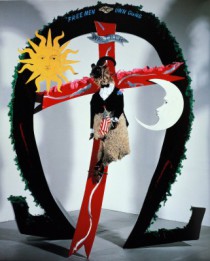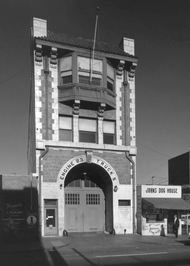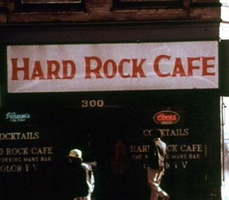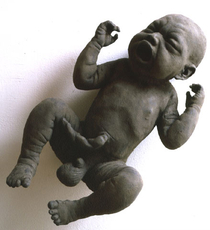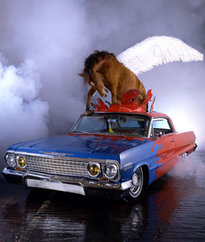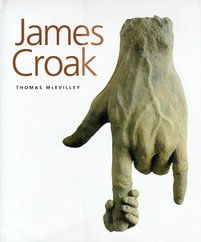

James Croak: Making Art and Acting Tough
In "Young Turks," sculptor James Croak tells the story of how L.A. Times art critic William Wilson reviewed one of his shows by saying: "James Croak has to make a decision between making sculpture and acting tough." Croak then quips, "So I've quit making art."
In reality, nothing could be further from the truth.
For four decades, Croak has been actively creating sculptures — at first, large-scale installations such as "Vegas Jesus"; later, more intimate, life-size cast-soil figures such as "Dirt Baby."
In the late 1970s and early '80s, Croak lived and worked in the firehouse at the heart of L.A.'s Skid Row on 5th Street, "Nickel Street, as they call it," he says in the film.
It was a very rugged environment — there was at the time a serial killer on the loose that was slitting the throats of homeless men in the alleys around Croak's firehouse.
"I've seen six or seven murders in the last two years here," he says. "I personally found two of the Skid Row Slasher victims."
The seamy surroundings and his use of unconventional materials and taxidermy animals — such as the crucified ram in "Vegas Jesus" — engendered a violent, sometimes disturbing, aesthetic in his work. But the violent overtones were often countered with a whimsical humor and mythical grandeur.
And his life imitated his art: During his downtown years, Croak was known as a wild man — not just for his collection of guns and the fact that he lived in just about the toughest area in L.A., but also because he exhibited a reckless abandon that often led to danger.
"Young Turks" director Stephen Seemayer tells a story about one Christmas Eve when he and Croak went for a drink at the Hard Rock Café, a dive bar at the corner of 5th and Wall. When they walked in, a hush fell over the assembled Skid Row regulars, who believed these two swaggering young men to be undercover LAPD.
The crowd parted like the Red Sea as Seemayer and Croak bellied up to the bar, ordered shots of Jack Daniels and downed them under the steely gaze of an annoyed bartender.
After a few moments, the locals figured out Seemayer and Croak were not in fact cops and started moving toward them slowly. Sensing that Seemayer was feeling threatened, Croak reminded him that there was a Walther PPK in his ankle holster.
"What are you gonna do?" Seemayer whispered.
Looking around at the growing number of large men moving toward him, Croak surveyed the layout of the bar.
He calmly turned to Seemayer and said: "I'll have to make 'em all head shots."
Seemayer — visualizing the headline "Bloody Christmas at Skid Row Bar" — gasped, "That's your plan!?" Whereupon, Croak snickered and agreed it was time to go.
They finished their drinks and backed out through the swinging saloon doors.
Croak left Los Angeles in the late '80s. He now makes sculptures at his studio in Williamsburg, VA, where he lives with his wife, Tomoe Ito.
He shows his work around the world, including a recent solo exhibition at a gallery in Miami, and his work was the subject of a monograph by Thomas McEvilley that was published in 1999 and is available at amazon.com.
